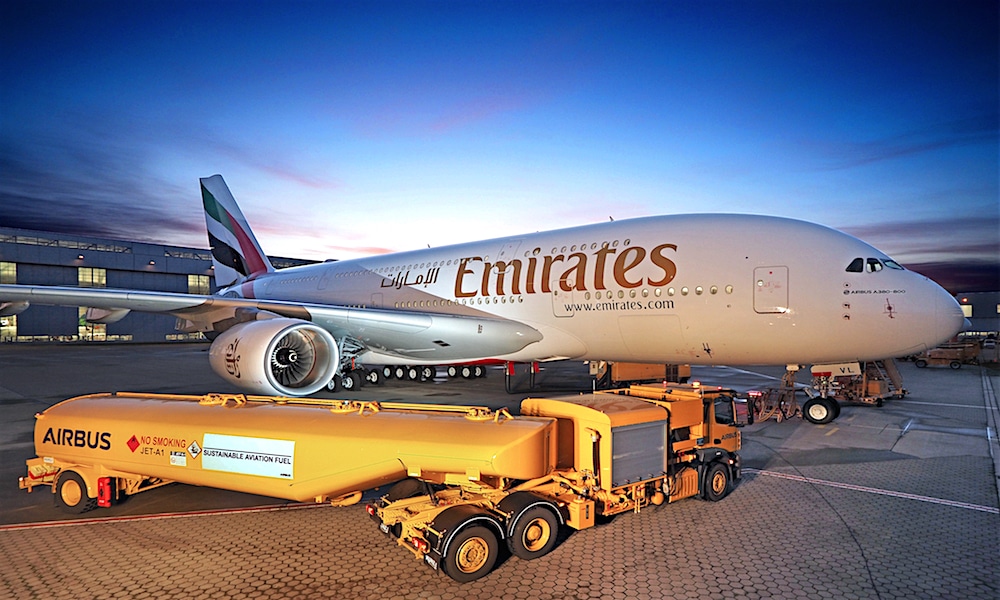
Emirates has welcomed A6-EVL, its 116th A380 as the first of three A380s to join its fleet in 2020 and is scheduled to receive two more A380 aircraft later this month, one of which will feature its signature Premium Economy product.
Since its entry into the Emirates fleet 12 years ago, the A380 has been the airline’s flagship and a customer favourite. Signature elements such as the A380 Onboard Lounge and Shower Spa continue to be talked about around the world. Many customers ensure that they book their travel on this aircraft to experience its spaciousness, quietness and comfort across every cabin.
Sir Tim Clark, President, Emirates Airline, said: “The A380 has been a success story for Emirates, and this is reflected in the strong customer interest wherever we have deployed the aircraft over the years. The A380 has helped us efficiently serve customer demand at slot constrained airports and also on trunk routes, supporting our long-haul hub operations. Importantly, with the space and technology on this aircraft, we have been able to introduce new concepts onboard that have transformed the flying experience for the better. We look forward to introducing our Premium Economy, which will make its debut on an A380 in the coming months, and we will continue to invest in our world-class A380 product experience. The A380 will remain our flagship for the next decade, and we will re-deploy it on more routes as travel demand returns.”
The A380 currently flies to Cairo, Amman, Paris, London, Guangzhou, Manchester and Moscow and recently services have been ramped up to four daily A380s on London Heathrow and daily flights to Moscow. The double-decker is also demonstrating its versatility by being utilised as a ‘mini-freighter’ on select cargo charter operations to transport urgently required cargo across the Emirates network.
The delivery flight for the newest member of the Emirates fleet was powered by a blend of jet fuel and sustainable aviation fuel (SAF). This is the first time the airline is using sustainable aviation fuel to power an A380. The biofuel used for the flight was produced from used cooking oil in Finland.
Sir Tim added: “Sustainability remains very much on our agenda at Emirates. We are watching developments in sustainable aviation fuel very closely, and we look forward to a time when it can be produced at scale, and in a cost competitive manner. Our latest A380 delivery flight was partially powered by sustainable aviation fuel and this is a positive step towards reducing our overall emissions.”
Emirates continues to support initiatives that contribute to the development of the SAF industry and wider deployment of biofuels. The airline is part of the Steering Committee of the Clean Skies for Tomorrow coalition, established by the World Economic Forum to promote the development of SAF. Emirates has also supported a series of webinars on the future of SAF in the UAE, hosted by Khalifa University. A third of Emirates’ crew transportation buses in Dubai currently are powered by biofuels, with one of its main crew bus transport contractors, Al Wegdaniyah, adopting biofuel supplied by Neutral Fuels.
Emirates continues to take significant steps towards emissions reduction. In addition to operating modern and fuel efficient aircraft with an average age of 6.5 years, Emirates also has a comprehensive fuel efficiency programme that has implemented a range of initiatives including working with air navigation providers on ‘flex tracks’, or flexible routings that create the most efficient flight plan for each flight.
Emirates also runs a robust fuel monitoring system. On the ground, the airline implements fuel-efficient practices where possible, such as the use of power units that consume less energy, and switching one or two engines off while taxiing in after landing. Other operating initiatives include idle reverse thrust on landing, loading efficiency improvements, aircraft weight management, and the introduction of electronic flight bags for cockpit crew.




